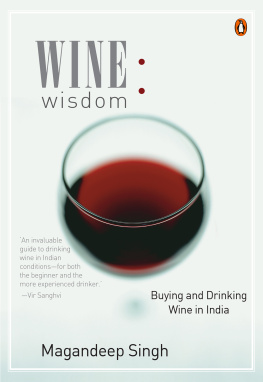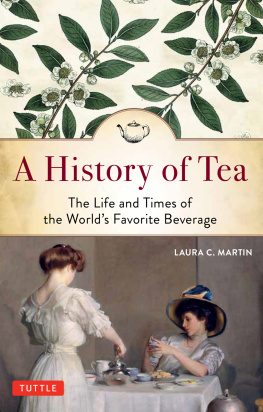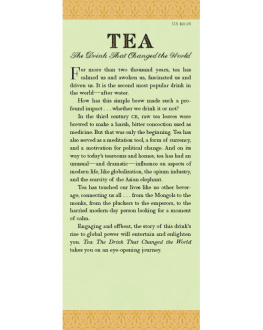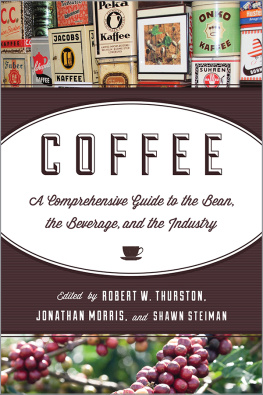
To Joe, my husband and tea partner for life,
and to our children, Zach and Kate, the perfect
pairing to complete our family.
and text copyright 2014 by Lisa Boalt Richardson.
All rights reserved. No part of this book may be reproduced in any form without written permission from the publisher.
Library of Congress Cataloging-in-Publication Data available.
ISBN 978-1-4521-1229-9 (hc)
ISBN 978-1-4521-3021-7 (ebpub, mobi)
Designed by Alice Chau & Agnes Lee
Photographs by Jenifer Altman
Chronicle Books LLC
680 Second Street
San Francisco, California 94107
www.chroniclebooks.com


INTRODUCTION
My fascination with tea began one day years ago with a great cup of black cinnamon-spiced raspberry tea. My thirst was quenched right away, but I remained intrigued about what I had just imbibed and yearned to know more about this brilliance in a cup. That made me even more intent on finding out as much as I could about tea. I started reading, researching, and attending conferences, all of which eventually led to the birth of my speaking, educating, writing, and consulting tea business in 2000.
Maybe your interest in tea began with a great cup, too, and now you also thirst to know more about this ancient beverage, second only to water in popularity around the world. Or perhaps tea is like an old acquaintance whom you realize you dont know much about and think you should know more. This book is a culmination of questions I have asked and answers I discovered as I explored this complex beverage in classrooms and libraries, tea shops and tearooms, tea fields and tea factories.
In the following pages, I hope to present tea in a fresh and interesting way. First, you will learn the history of tea around the world and how teas, all of which come from the same plant, become different colors. Then you will discover how to buy, store, steep, and taste tea for its many different nuances. You might have wondered if tea is grown sustainably and how tea farmers are caring for the environment. I tackle these topics as well, along with explaining which tea is the healthiest to drink and whether you should worry about how much caffeine it contains. I also explain how the beverage is celebrated through diverse ceremonies and rituals around the world and encourage you to re-create them in your own home. Finally, you will find out how to use tea beyond the cup, from pairing it with food and cooking with it to adding it to cocktails, compost piles, beauty lotions, and more.
Although I am considered a tea specialist, and some may even call me an expert, my education about this beverage never ends. I continue to read about tea, travel to countries where it is grown, and drink it with the same eagerness I felt when I started my tea journey. For me, tea is much more than a beverage. It is a lifestyle that I will continue to pursue, and I hope you will as well. Happy sipping!
CHAPTER ONE
WHAT IS TEA?
Where Its Grown and How It Becomes Specialty Tea

Tea is a beverage, a commodity, a ceremony, an afternoon tradition, a drink of peace, a pick-me-up, a path to meditation, and much more. It comes from a sturdy evergreen bush that thrives in warm, wet places, and age-old prescriptions rule how the meticulously plucked fresh leaves of the plant are processed to produce what you steep in a teapot. Tea has a long, rich history as well, one laden with both fanciful legends and hard facts. Part of the enjoyment of drinking tea is learning as much as you can about everything from its botanical lineage and centuries-old history to the differences between black tea and green tea, oolong tea and dark tea.
WHAT IS TEA?
Of the many legends about how tea was discovered, probably the most popular one names the Chinese emperor Shennong (sometimes spelled Shen Nung), known as the father of Chinese agriculture, as the first person to steep tea and drink the steaming brew. The year was 2737 B.C ., and while the emperor was boiling water to purify it, a gust of wind carried a scattering of tea leaves from a nearby wild bush into his kettle. Instead of trying to retrieve and discard the leaves, he decided to infuse them, and then sat back and enjoyed the resulting beverage. There is no written record of this first cup, however. Indeed, no references to tea appear in any Chinese literature until some three millennia later. But regardless of whether the story of Shennong and the inadvertent cup of tea is myth or truth, we do know that the tea plant likely originated in the southwestern Chinese province of Yunnan, where its leaves were initially appreciated for their medicinal qualities.
In time, much of the rest of the world developed a taste for the combination created when those wayward leaves serendipitously blew into the emperors kettle of boiling water. The bush that yielded them was the Camellia sinensis plant, and by definition the six classes, or types, of true tea recognized todaywhite, green, yellow, black, oolong, and darkmust come from this particular species of tropical and subtropical evergreen native to Asia.
You may be familiar with the camellia plant, as many different species are grown around the globe. They are known for their beautiful, shiny, deep green leaves and stunning flowers in a variety of colors. C. sinensis produces a small white blossom with a yellow center that is not as showy as the blooms of many of its cousins. But tea growers are not seduced by the beauty of the flowers in any case. In fact, they discourage the plants from blossoming because they know that all the plants energy must go into producing leaves that will yield fine teas.
The genus name Camellia comes from the latinized form of the surname of Georg Josef Kamel (sometimes spelled Camel; 16611706), a Czech-born Jesuit missionary who became a well-known botanist in his time. He didnt discover the plant, nor did he name it, though he did tend tea bushes in gardens in the Philippines. Carl Linnaeus, creator of the taxonomy system still in use today, chose to pay tribute to Kamels contributions to botany by using his name for the genus, one of many in the Theaceae family. The word sinensis is Latin for from China.
C. sinensis boasts two main varieties: C. sinensis var. sinensis and C. sinensis var. assamica. The former botanical name, though it seems repetitive, simply indicates that the plant is the Chinese variety of the species. The name of the latter variety specifies it is from Assam, in northeastern India, close to the Himalayas. C. sinensis var. sinensis tends to have a smaller leaf and can withstand colder temperatures than its counterpart. It can grow upward of 15 ft/4.5 m if left untouched. The larger-leaved Indian variety, which can reach 40 ft/12.2 m in the wild, is hardy but cannot tolerate frost.
Herbal Infusions
Many herbs, flowers, dried fruits, and even barks and pine needles can be infusedthat is, steeped in water (or other liquid) to extract their soluble elementsto make a lovely brew. These beverages are properly called herbal infusions or tisanes but never teas.
Next page

















